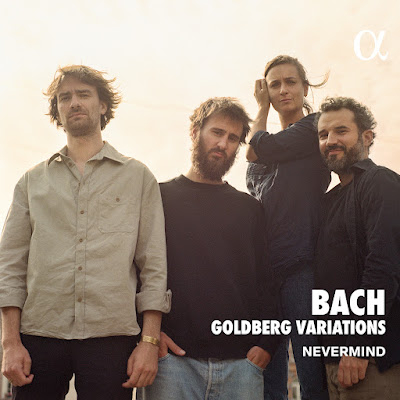Unexpected America: music by Paul Schoenfield, William Bolcolm, Camargo Guarnieri, Aaron Copland, Mike MowerPut on your dancing shoes for a well-chosen mix of South and North American music for violin and piano, from violinist Oscar Bohórquez and pianist Frank Braley.
The programme begins with a suite of Four Souvenirs for Violin and Piano, by the Detroit-born composer Paul Schoenfield, written in 1990. An opening Samba, with a slow interlude at its centre, is followed by a sultry Tango. As often happens at a dance, when a slow song comes up, things get steamy! The ghost of George Gershwin is then brought out for Tin Pan Alley. This is top rank pastiche; I definitely use that word in a positive sense! Schoenfield's finale is Square Dance, one of the most lively bits on this album. It's sad to learn that Schoenfield died just under a year ago, in April 2024, at 77 years of age. This wonderful performance makes for an elegy and remembrance of a fine composer.
William Bolcolm's lovely ragtime "Graceful Ghost" is a standout. Bolcolm really shows as well as tells; this is as graceful as any piece I've heard. The themes are so lovely, which is important in this form. With so many repetitions in a ragtime, each of the tunes must be embraced on its return. Bolcolm's six minute piece never wears out its welcome; this is salon music of the highest level.
Mozart Camargo Guarnieri's Violin Sonata no. 4 is a substantial work in a standard classical music form, but even here one feels the built-in rhythms of the choros, the urban popular music of Brazil. Written in 1956, while his (and every other Brazilian composers') master, Heitor Villa-Lobos, was still alive, Guarnieri's Sonata looks back to Villa's three violin sonatas of the early 1920s, which made such a stir at the Semana de Arte Moderna in Sao Paulo in 1922. The typically Brazilian version of nostalgia - saudade - is evident in the lovely Intimo slow movement, though Guarnieri really lets loose in the raucous Allegro appassionato finale, which has Villa's fingerprints all over it. By the way, Mozart was really Guarnieri's given name; his brothers were Bellini, Verdi and Rossine. A tough act to follow, on top of the Villa-Lobosian elephant in the room, but Guarnieri never seems to have lacked for self-confidence. His music always displays complete self-assurance and equanimity.
Aaron Copland's Nocturne, from 1926, is another slow dance in a modernist idiom. Perhaps it's the context of this programme, but this American music heard through a Parisian lens, with Nadia Boulanger's fingerprints this time, very much feels at home in South America as well. Copland made many personal and professional connections among Latin American musicians through his involvement in Nelson Rockefeller's Good Neighbor initiative of the WWII years, but that was still in the future.
The last work on the disc is the beguiling Bossa Merengova from the British composer Mike Mower's Sonata Latino, from 1994. This clever mix of the Brazilian bossa nova and the Cuban merengue shows the underlying connections between the various dance traditions of Latin America. Again with a wistful element to go with the sprightly rhythms, this is a wonderful way to end a wonderful programme.
Bohórquez plays a Guarneri del Gesù violin on which he produces a beautiful tone; his familiarity with the various musical traditions of Latin America results in completely idiomatic performances. He and pianist Frank Braley really swing this music when required; it's important to stress the folkloric component of this music, especially in a work like the Guarnieri Violin Sonata, with its erudite, academic, component.





